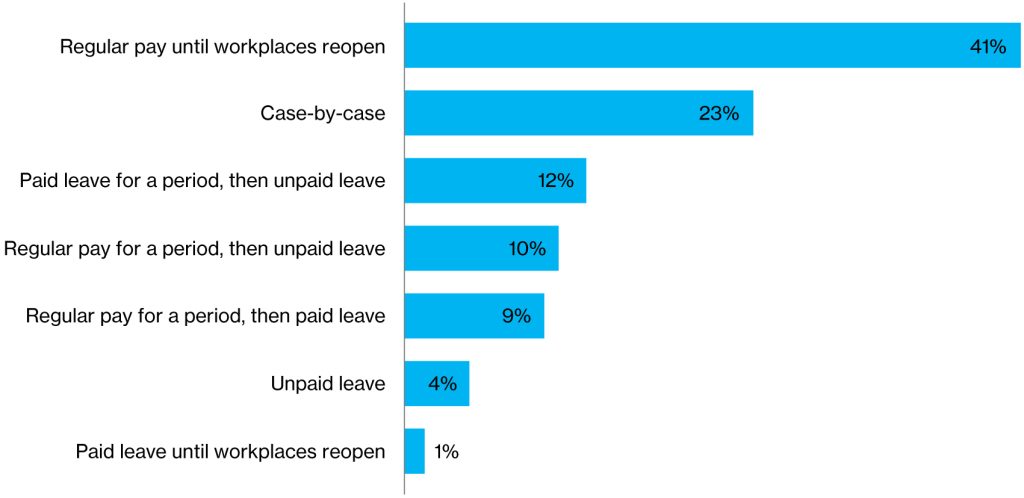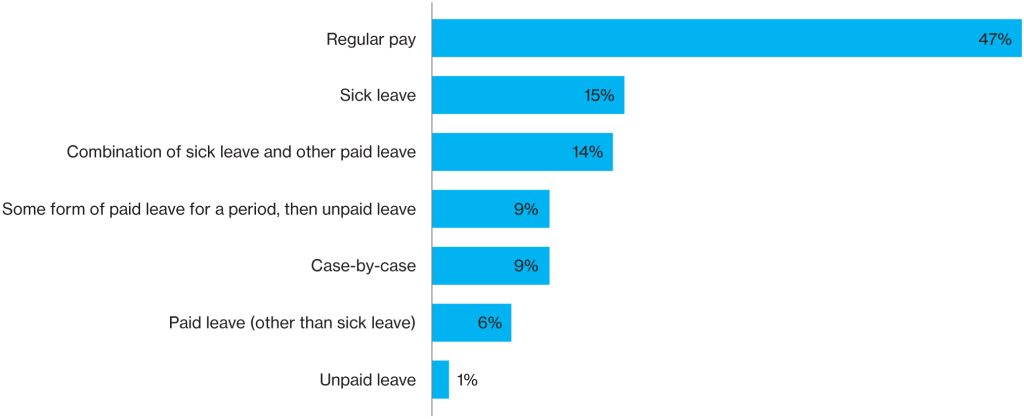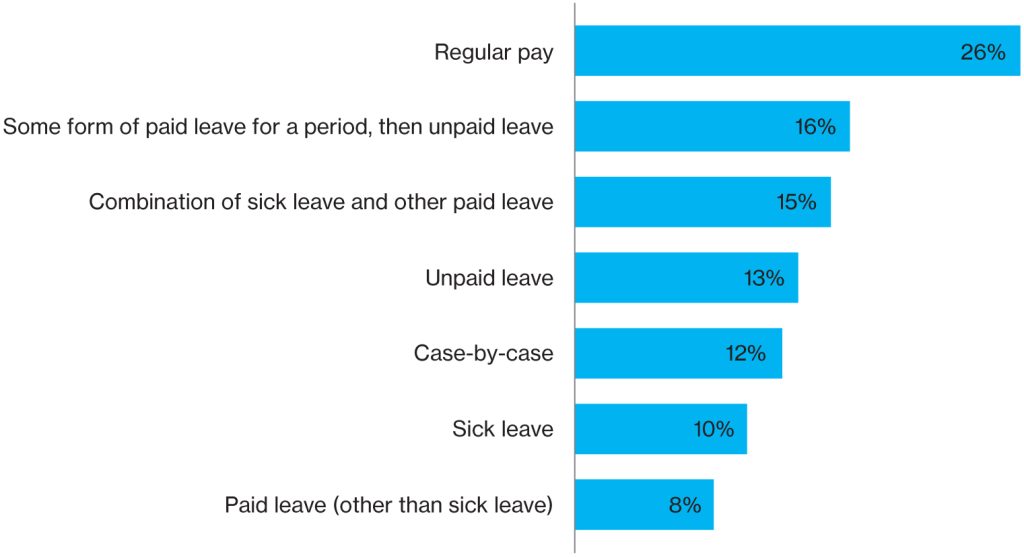
Working Through COVID-19
Remote Work Policies and Compensation Survey
The spread of the novel coronavirus disease is changing the nature of work. For many Canadians, it’s also changing how they get paid. As businesses adapt to physical distancing, how are Canada’s workers—especially those who cannot do their jobs remotely—being supported by their organizations?
The Conference Board has asked HR professionals from across Canada how they are managing remote work and compensation for their employees.
Here’s what we found.
Note: Survey responses were collected on Monday, March 24, 2020. Since then, provincial governments have released new measures that will have an impact on some businesses. This situation continues to evolve.
Seven out of 10 organizations have maintained their full workforce—for now
Q: Has your organization reduced work schedules or issued temporary layoff or termination notices to any employees?
(n = 183; percentage of organizations)

Note: Total is greater than 100 as respondents could select more than one option.
Source: The Conference Board of Canada.
Of the 30 per cent of organizations that have had to start reducing their workforce, many are tapping into government programs to support their employees. Among those using Supplemental Unemployment Benefit (SUB) plans, organizations are topping employees up to 70–95 per cent of their pay for an average of 15 weeks.
Organizations that have reduced their workforce are taking advantage of SUB plans
Q: Have you provided or intend to provide any of the following forms of compensation or support?
(n = 16; percentage of organizations)

Note: Total is greater than 100 as respondents could select more than one option.
Source: The Conference Board of Canada.
But what about employees who can’t perform their work remotely?
91% of organizations are navigating our new reality with employees who cannot work remotely.
Locked out of work, but still being paid
Q: How are you compensating employees who cannot access their physical workplace and cannot otherwise perform their work remotely?
(n = 160; percentage of organizations)

Note: Total is greater than 100 as respondents could select more than one option.
Source: The Conference Board of Canada.
Before Warnings
Ignored COVID-19 travel warnings? Expect less employer support
Q: How are you compensating employees whose jobs cannot be performed remotely and have to self-quarantine due to travel PRIOR to warnings, OR have been in contact with an infected individual?
(n = 151; percentage of organizations)

Note: Total is greater than 100 as respondents could select more than one option.
Source: The Conference Board of Canada.
After Warnings
Ignored COVID-19 travel warnings? Expect less employer support
Q: How are you compensating employees whose jobs cannot be performed remotely and have to self-quarantine due to travel AFTER warnings?
(n = 148; percentage of organizations)

Note: Total is greater than 100 as respondents could select more than one option.
Source: The Conference Board of Canada.

